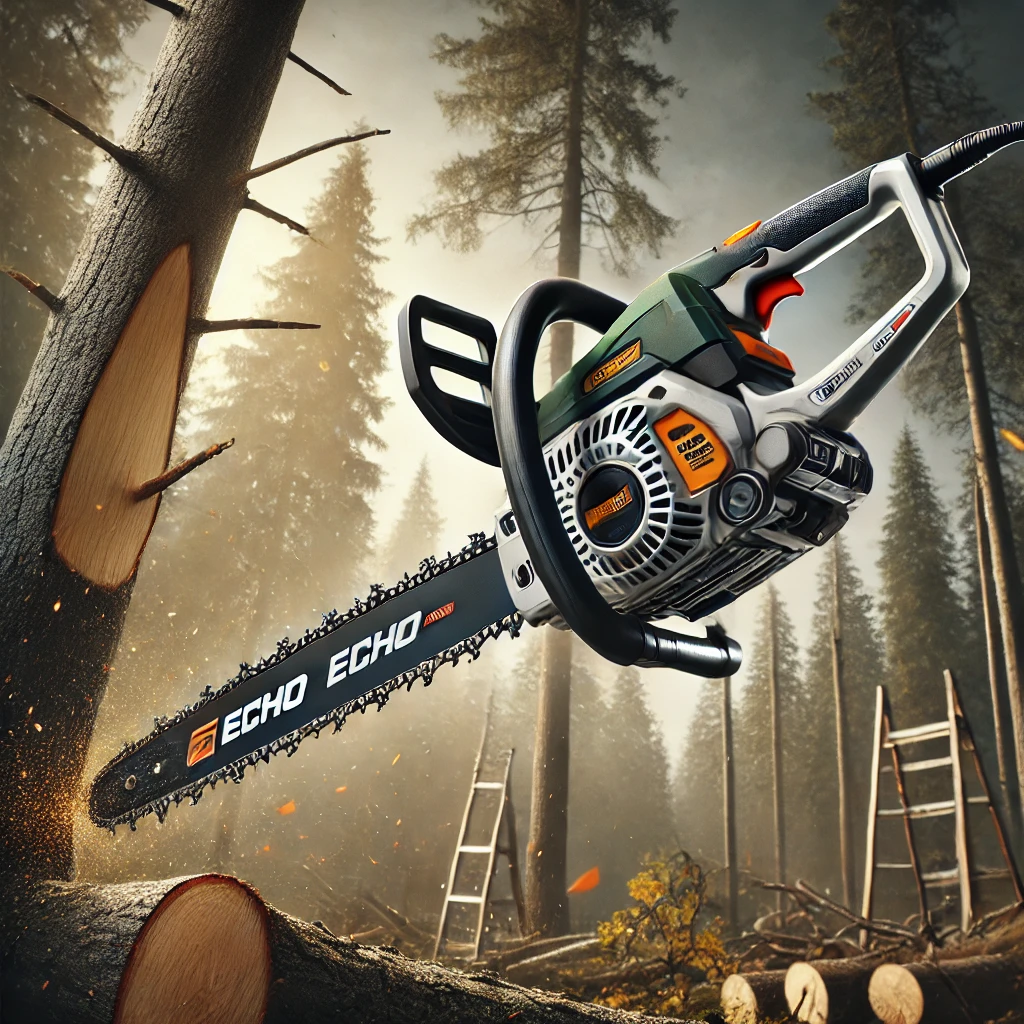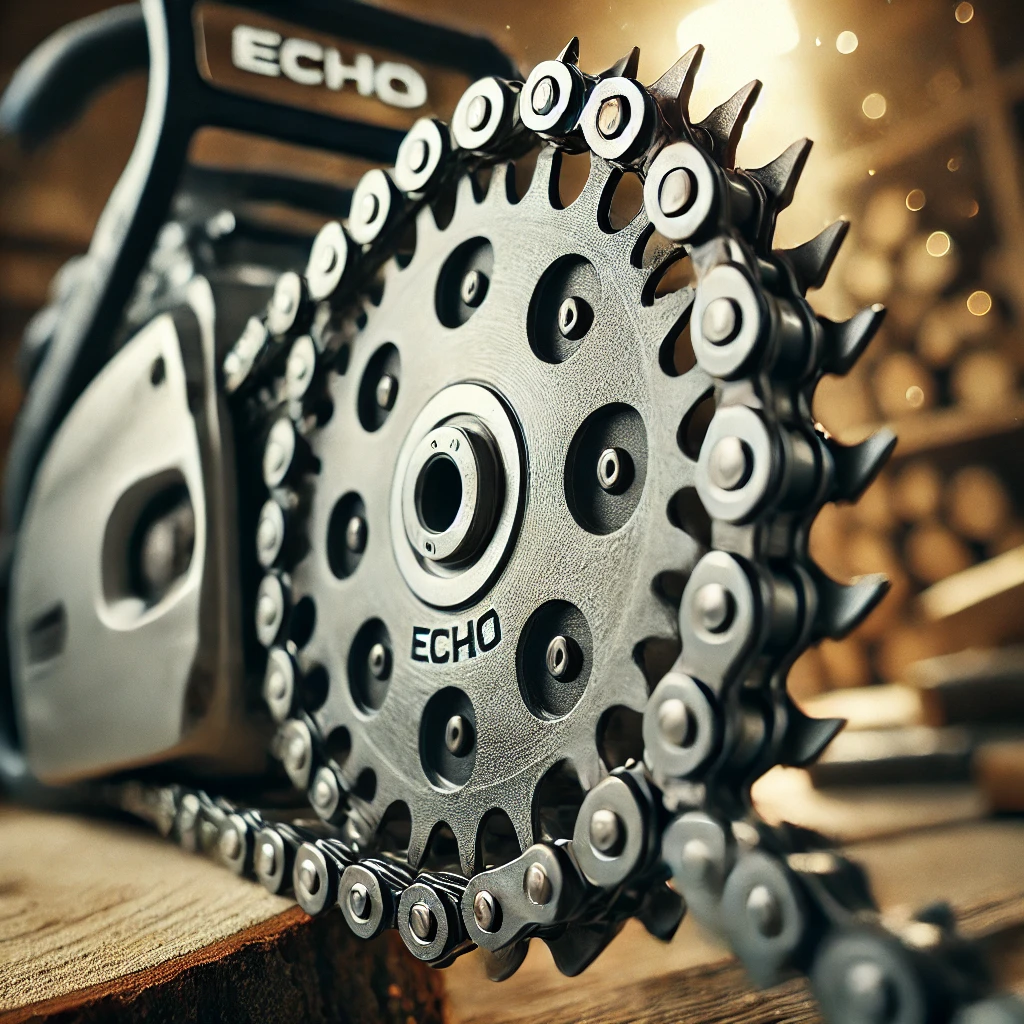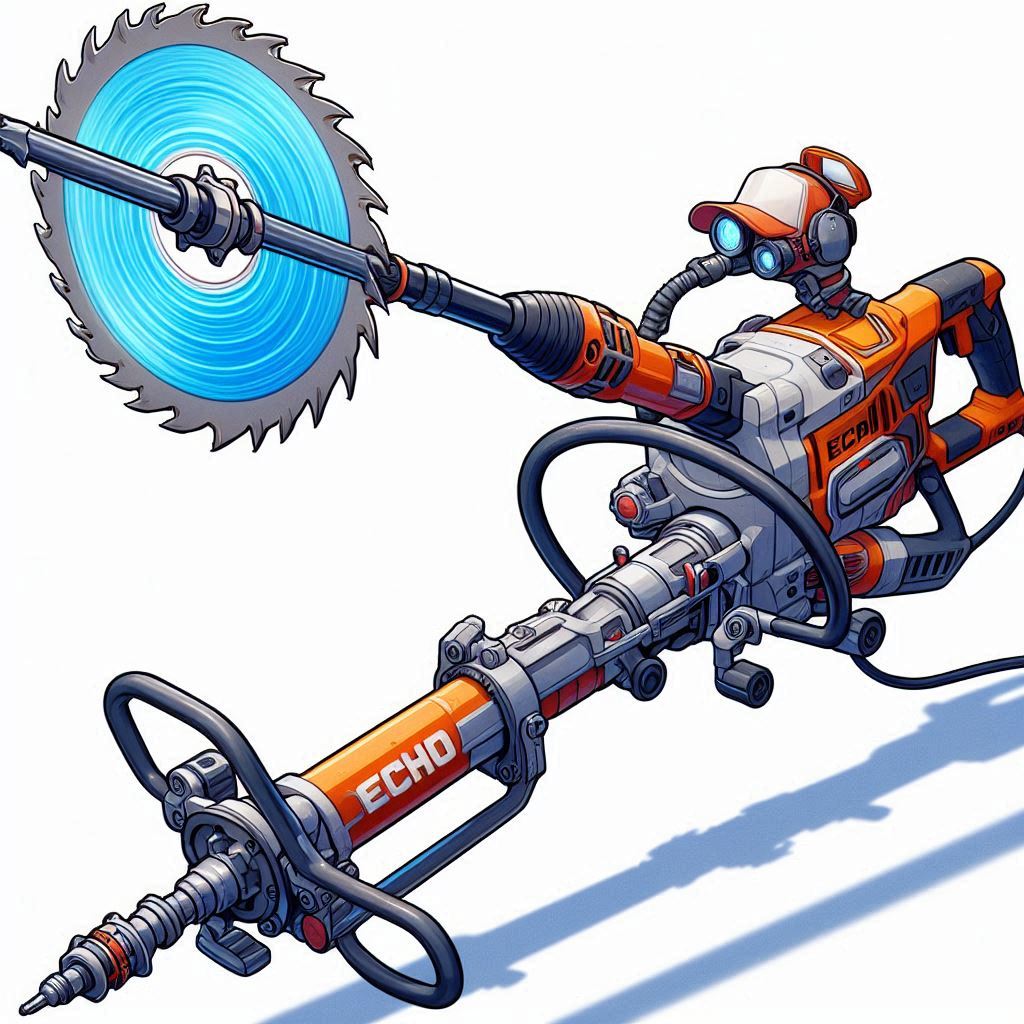I thought my Fiskars pole saw was broken. The blade wouldn’t cut right, and the pole felt loose. I was ready to buy a new one—until I checked the parts. A quick fix saved me time and money!
If your Fiskars pole saw parts wear out, don’t panic. Knowing how to replace a Fiskars pole saw parts wing, find the right spring size, or read a parts diagram manual makes repairs easy. I’ve learned this the hard way, and I’m here to help you avoid the same mistakes.
In this guide, I’ll break down every essential part, show you how to fix common issues, and help you find genuine replacements. Let’s keep your saw in top shape—without the frustration!
Fiskars Pole Saw Parts List: Know Your Tool Inside Out

Ever had your Fiskars pole saw stop working mid-cut? I have. At first, I thought the whole thing was broken. But after a quick check, I realized it was just a small part that needed replacing. Knowing the parts of your pole saw can save you time, effort, and money.
Below, I’ve broken down the most essential Fiskars pole saw parts, their functions, and when you might need to replace them.
Essential Fiskars Pole Saw Parts & Their Functions
Here’s a quick reference table to help you understand your tool better:
| Part Name | Function | When to Replace |
| Pole Saw Blade | Cuts through branches and limbs | If it’s dull, bent, or rusted |
| Saw Head Assembly | Holds the blade and connects to the pole | If it loosens or breaks |
| Pruner Blade | Cuts smaller branches easily | If it struggles to cut cleanly |
| Spring Mechanism | Helps the pruner blade snap back | If it loses tension or breaks |
| Fiskars Pole Saw Parts Wing | Keeps key components secure | If the saw wobbles or feels unstable |
| Rope & Pulley System | Activates the pruner for cutting | If the rope frays or the pulley jams |
| Pole Extension Lock | Keeps the pole securely extended | If the pole collapses unexpectedly |
| Handle Grip | Provides comfort and better control | If worn out or slippery |
| Blade Cover | Protects the blade when not in use | If damaged or missing |
Why Knowing Your Pole Saw Parts Matters
Understanding your Fiskars pole saw parts makes troubleshooting simple and stress-free.
Blade not cutting well? You might just need a quick sharpening or a replacement.
Pole keeps slipping? Check the pole extension lock before assuming it’s broken.
Pruner not working? The spring mechanism may have lost tension.
Pro Tip: Keep Spare Parts Handy
I always keep an extra blade, a backup spring, and a spare rope. Why? Because nothing’s more frustrating than starting a job and realizing your tool isn’t working. Having the right parts on hand saves time and keeps your pole saw running smoothly.
In the next section, I’ll show you how to use a Fiskars pole saw parts diagram manual to quickly identify, order, and replace parts. Let’s keep your saw in top shape!
Fiskars Pole Saw Parts Diagram & Manual: The Ultimate Cheat Sheet
Have you ever looked at a Fiskars pole saw parts diagram and felt confused? I did too. The first time I tried to fix my saw, I ordered the wrong part. It didn’t fit, and I wasted money. That’s when I learned how to read a parts diagram the right way.
If you want to find the correct parts fast, I’ll show you where to get official manuals and how to use them easily.
Where to Find the Official Fiskars Pole Saw Parts Diagram Manual
Finding the right manual is simple if you know where to look. Here are the best sources:
Fiskars Official Website – Search your pole saw model number for an exact match.
Inside the Box – Many Fiskars pole saws come with a printed parts diagram.
Online Retailers – Amazon, Home Depot, and Lowe’s often provide digital manuals.
Fiskars Customer Support – Can email or send a copy if you can’t find yours.
Pro Tip: Your model number is usually printed near the handle or blade assembly. Check it before searching for a manual.
How to Read a Fiskars Pole Saw Parts Diagram

A parts diagram is like a map of your pole saw. If you read it correctly, you can identify and order the right part without mistakes. Here’s how:
Find the Exploded View – This shows the saw in separate pieces to help you understand each part.
Look for Numbered Labels – Each part has a number that matches a description in the parts list.
Match the Part to the List – This tells you the name, function, and part number for ordering.
Check Small Parts Too – Washers, bolts, and springs are tiny but important for a secure fit.
Personal Experience: I once replaced a spring mechanism but forgot a small washer listed in the diagram. Without it, my saw wobbled and felt unstable. A quick double-check of the parts diagram saved me from frustration.
Step-by-Step: Using a Parts Manual for Troubleshooting
If your pole saw isn’t working, use the manual to find and fix the issue. Here’s Issue: The pruner blade won’t snap back after cutting.
Step 1: Open the parts diagram manual and find the spring mechanism section.
Step 2: Check the part number and compare it to your saw’s existing spring.
Step 3: If it looks stretched or weak, order a spring replacement using the diagram.
Pro Tip: If your pole saw keeps slipping, check the pole extension lock in the manual. Sometimes, a tightening adjustment is all you need—no replacement required.
Why Using a Parts Diagram Saves You Time & Money
No Guesswork – Get the right part the first time and avoid frustration.
Faster Repairs – Know exactly where each part fits, so fixing is quick.
Avoid Unnecessary Replacements – Sometimes, a simple adjustment fixes the problem.
Real-Life Fix: A friend of mine thought his blade was dull and needed replacing. After checking the parts diagram manual, he found that the blade tension screw was loose. One quick fix saved him from buying a new blade!
Fiskars Pole Saw Parts Wing: What It Is & Why It Matters
Ever had your Fiskars pole saw feel wobbly or unstable while cutting? I have. The first time it happened, I thought my saw was broken. But after a quick check, I realized the issue wasn’t the blade or the pole—it was the Fiskars pole saw parts wing. Tightening it fixed everything in two minutes!
If your saw feels loose, shaky, or misaligned, this small but crucial part might be the culprit. Let’s dive into what it is, what it does, and how to fix common problems.
What Is the Fiskars Pole Saw Parts Wing?
The wing on a Fiskars pole saw is a small but essential part that helps secure key components. It typically:
Holds the saw blade or pruner mechanism firmly in place.
Keeps the pole extension lock tight, preventing unexpected slipping.
Ensures overall tool stability, making cutting safer and smoother.
It may not look like much, but if it’s loose, missing, or broken, your saw won’t function properly.
Why the Wing Matters for Performance
A faulty Fiskars pole saw parts wing can cause three major issues:
Blade Wobbling – If the wing isn’t tight, your blade might move while cutting. This makes trimming harder and more dangerous.
Pole Slipping – A weak wing won’t hold the pole extension lock in place, causing your saw to collapse mid-use.
Uneven Cuts – If your saw isn’t stable, it won’t cut cleanly, making pruning frustrating and inefficient.
Personal Fix: I once struggled with uneven, jagged cuts and couldn’t figure out why. After checking my saw, I found the wing had loosened over time. A quick adjustment made my cuts smooth again!
Common Issues & How to Fix Them
If your Fiskars pole saw parts wing isn’t working right, here’s what to check:
1. Loose Wing
Fix: Use a wrench or screwdriver to tighten the wing screw until it feels secure.
2. Broken or Cracked Wing
Fix: If the wing is cracked, replace it immediately. A damaged wing won’t hold pressure, which can make your saw unstable.
3. Wing Misalignment
Fix: If the wing isn’t sitting correctly, adjust its position before tightening. Sometimes, simply repositioning it can solve the problem.
Pro Tip: If you frequently extend and collapse your saw, check the wing regularly to ensure it stays tight.
When to Replace the Fiskars Pole Saw Parts Wing
You don’t always need a new wing, but sometimes, replacement is the only option. Here’s when to swap it out:
If the wing is cracked or bent – A damaged wing can’t hold the saw together properly.
If tightening doesn’t fix the issue – If the saw still feels loose after adjusting the wing, it might be worn out.
If it’s missing – If you lost the wing during transport or storage, you must replace it for safety.
Quick Tip: Always keep a spare wing handy. They’re inexpensive and can prevent bigger issues down the road.
Fiskars Pole Saw Parts Spring Size: Choosing the Right One
I once spent an entire afternoon trying to figure out why my Fiskars pole saw pruner wasn’t snapping back after each cut. I assumed the blade was faulty. But after some digging, I realized the problem was the spring—it had lost tension.
I ordered a replacement, thinking any spring would work. Big mistake! The one I bought was too stiff, making the pruner hard to use. That’s when I learned: choosing the right spring size is crucial.
Why the Spring Matters for Smooth Operation
The spring mechanism is what allows the pruner blade on your pole saw to snap back after cutting. If the spring is too weak, the blade won’t close properly. If it’s too strong, cutting becomes a struggle.
A worn-out spring can make trimming frustrating because it slows down cutting speed.
Using the wrong spring size can damage your tool by creating too much resistance.
A properly fitted spring keeps your pole saw efficient and extends its lifespan.
If your pruner blade feels sluggish, chances are the spring needs replacing.
How to Determine the Correct Fiskars Pole Saw Spring Size
Finding the right spring size is easier than you think. Follow these steps:
Check the Manual – Your Fiskars pole saw parts diagram manual should list the correct spring specifications.
Measure the Old Spring – If you don’t have the manual, measure your existing spring before buying a replacement.
Match the Dimensions – You need to check:
- Spring Length (when fully extended)
- Coil Diameter (the width of each coil)
- Wire Thickness (how thick the metal is)
- Order an Exact Match – Use the measurements to find a Fiskars-approved replacement.
Pro Tip: If your current spring is stretched out or rusty, replace it even if it still works. A weak spring will only get worse over time.
Step-by-Step: How to Measure Your Spring Before Buying a Replacement

If you need to replace your Fiskars pole saw spring but don’t know the size, here’s a simple guide:
Step 1: Remove the old spring carefully using pliers.
Step 2: Use a ruler to measure the total length when fully extended.
Step 3: Measure the diameter of the coils.
Step 4: Check the thickness of the wire with a caliper or ruler.
Step 5: Compare these measurements with official Fiskars replacement parts before ordering.
Mistake to Avoid: Don’t guess the size. Even a slightly off measurement can affect performance.
When to Replace Your Fiskars Pole Saw Spring
Not sure if your spring needs replacing? Here are some signs:
The pruner blade is slow to snap back – This means the spring is losing tension.
You hear a clicking sound when cutting – This could indicate a damaged coil.
The spring looks stretched or rusted – A worn-out spring won’t perform well.
Your cuts feel harder than usual – A faulty spring adds resistance to the pruner.
Real-Life Fix: I once ignored a worn-out spring because my saw still worked. But over time, the extra strain made cutting harder. Replacing the spring instantly improved my trimming speed and comfort.
One day, my Fiskars pole saw pruner stopped snapping back after cutting. I struggled, thinking the blade was dull. Turns out, it was just a worn-out spring. A quick replacement made it work like new!
If your pruner feels stiff, slow, or unresponsive, replacing the spring is a simple fix. Here’s how to do it step by step—no stress, no hassle!
Signs Your Pole Saw Spring Needs Replacing
If your spring is failing, your pole saw pruner won’t work smoothly. Look for these signs:
Pruner blade won’t snap back – The spring lost tension.
Cutting feels harder – The spring isn’t giving enough force.
Clicking or grinding sounds – The spring might be broken.
Spring looks rusted or stretched – It’s time for a replacement.
Quick Test: Open the pruner and let go. If the blade stays open or closes slowly, the spring is worn out.
Step-by-Step: How to Replace a Fiskars Pole Saw Spring
This DIY fix takes less than 5 minutes and requires just a few basic tools.
Tools You Need:
Replacement spring (match it with your Fiskars model number).
Needle-nose pliers (for easy gripping).
Flathead screwdriver (to remove a stuck spring).
Lubricating oil (helps the new spring move smoothly).
Step 1: Locate the Spring
Open the pruner head to find the spring mechanism.
Pro Tip: Check your Fiskars pole saw parts diagram manual to pinpoint its exact location.
Step 2: Remove the Old Spring
Use pliers to carefully detach the old spring from its attachment points.
If it’s stuck or rusted, gently pry it loose with a screwdriver.
Mistake to Avoid: Don’t stretch the old spring—it can snap and cause injury.
Step 3: Install the New Spring
Hook one end of the new spring onto the first attachment point.
Stretch it slightly and connect the other end to its slot.
Quick Tip: A drop of lubricating oil keeps the spring working smoothly and prevents rust.
Step 4: Test the Pruner Blade
Open and close the pruner a few times to check if the blade snaps back properly.
If it works smoothly, you’re done!
If it still feels stiff, check if the spring is attached correctly.
Real-Life Fix: The first time I did this, I installed the spring backward—the pruner wouldn’t close! Flipping it around solved the problem instantly.
Pro Tip: Maintain Your Spring for a Longer Life
Apply a drop of oil every few months to prevent rust.
Keep the pruner mechanism clean to avoid dirt buildup.
Check for loose screws that might affect spring tension.
Troubleshooting Fiskars Pole Saw Parts: Fixing Common Problems
I remember the first time my Fiskars pole saw started acting up—it felt wobbly, the blade wouldn’t cut right, and the pole kept slipping. I thought it was time for a new saw. Turns out, I just needed a few small adjustments!
If your pole saw isn’t working as it should, don’t worry. Most issues have quick and easy fixes. Let’s go through the most common problems and how to solve them in minutes.
Blade Won’t Cut Smoothly? It Might Be a Tension Issue
If your blade is struggling to cut through branches, check these things first:
Blade is dull – If it feels rough when cutting, sharpen it or replace it.
Blade tension is too loose – A loose blade won’t grip properly, causing uneven cuts.
Gummed-up blade – Sap and dirt can build up, reducing cutting efficiency.
Quick Fix:
Tighten the blade tension screw using a wrench until the blade is firm but not too tight.
Clean the blade with soapy water or WD-40 to remove sap buildup.
Sharpen the blade with a file or replace it if it’s too worn.
Real-Life Fix: My saw was barely cutting, and I thought it was a bad blade. A quick cleaning and tension adjustment made it feel like new again!
Pole Keeps Slipping Down? Check These Two Parts First
A slipping pole is frustrating—it collapses when you’re mid-cut, making pruning impossible.
Pole extension lock is loose – Over time, the locking mechanism can wear out.
Internal friction pads are worn – These pads keep the pole from slipping but degrade over time.
Quick Fix:
Tighten the pole lock – If it still slips, disassemble and check for worn-out parts.
Check for worn friction pads – If they’re too smooth, replace them.
Personal Experience: I once thought my saw was broken, but tightening the lock fixed everything in seconds!
Saw Won’t Lock Properly? Adjust the Locking Mechanism
If your pole won’t stay extended, the locking mechanism might be dirty, loose, or misaligned.
Locking screws are loose – Over time, they might need a simple tightening.
Dirt in the locking system – Dust and debris can prevent a proper lock.
Spring mechanism is failing – The lock relies on a spring that may need replacing.
Quick Fix:
Unscrew and clean the locking mechanism—a little lubricant helps!
Tighten all screws and test the lock to see if it holds.
Replace the spring if it’s lost tension.
Pro Tip: Always check for tiny parts when disassembling—losing a small washer can cause major issues!
Loose Components? A Simple Checklist
If your saw feels unstable or wobbly, check for these issues:
Pole extension lock is loose – Tighten it to secure the pole.
Wing nut isn’t tight – Re-tighten the wing nut on the saw head.
Bolts or screws are missing – Check all screws, especially on the blade assembly.
Quick Fix:
Inspect and tighten all screws—don’t overdo it, but ensure they’re snug.
Use thread-locking adhesive (like Loctite) if screws keep coming loose.
Double-check all connections—sometimes a simple push realigns everything!
Real-Life Fix: My saw felt unstable at full extension, and I almost replaced it. Turns out, one small screw was loose—tightening it solved everything!
Where to Buy Genuine Fiskars Pole Saw Parts (Avoid Fake Replacements!)
I once bought a cheap Fiskars replacement blade online. It looked real. But after a few uses, it bent and dulled quickly. I had to buy another one—this time, a real Fiskars part. Lesson learned!
If you need replacement parts for your Fiskars pole saw, don’t fall for low-quality knockoffs. Fake parts break faster, fit poorly, and can even damage your saw. Here’s where to get real Fiskars parts and how to avoid scams.
Best Places to Buy Genuine Fiskars Pole Saw Parts
For authentic Fiskars parts, buy from trusted sources:
Fiskars Official Website – Best for guaranteed original parts.
Amazon (Fiskars Official Store) – Convenient, but check the seller.
Home Depot & Lowe’s – Both sell genuine Fiskars parts.
Local Hardware Stores – Some stock official Fiskars parts.
Fiskars Customer Support – If unsure, contact Fiskars directly.
Pro Tip: Always search using your pole saw’s model number to find the right part!
How to Spot Fake Fiskars Parts (Avoid These Red Flags!)
Fake parts look real, but they don’t last. Here’s how to spot fakes before you buy:
Super Low Prices – If it’s too cheap, it’s probably fake.
No Fiskars Logo – Genuine parts always have branding.
Sketchy Seller Info – If the seller has bad reviews or no clear return policy, stay away.
Flimsy or Poor Fit – Fake parts feel light, rough, or don’t fit right.
No Warranty or Return Policy – If a seller won’t accept returns, it’s a red flag.
Real-Life Lesson: I once bought a cheap rope & pulley system. Within weeks, the rope frayed and snapped. Since then, I only buy official Fiskars parts!
Price Comparison: Official vs. Third-Party Sellers
Here’s a quick price guide comparing official Fiskars parts to third-party sellers:
| Part | Fiskars Official | Amazon (Trusted Sellers) | eBay/Discount Sellers |
| Replacement Blade | $19.99 | $14.99–$24.99 | $9.99 (Often Fake) |
| Spring Mechanism | $9.99 | $7.99–$12.99 | $4.99 (Low Quality) |
| Rope & Pulley System | $14.99 | $12.99–$19.99 | $7.99 (Unbranded) |
| Wing Nut Assembly | $8.99 | $6.99–$10.99 | $5.99 (Plastic Fake) |
Pro Tip: If the price is too low, it’s probably a knockoff!
Should You Ever Use Third-Party Parts?
Some third-party parts work, but many don’t. Here’s when to consider or avoid them:
When to Use Third-Party Parts:
- If it’s from a well-known brand with great reviews.
- If it has the same size and material as the Fiskars original.
- If Fiskars doesn’t sell that specific part separately.
When to Avoid Third-Party Parts:
- If it’s made of plastic instead of metal.
- If reviews mention poor fit or durability.
- If it voids your Fiskars warranty.
Personal Story: I once tried a cheap third-party pole extension lock. It didn’t fit and made my saw slip constantly. I replaced it with a real Fiskars part, and it worked perfectly!
Expert Maintenance Tips to Extend the Life of Your Fiskars Pole Saw
I used to replace my blades way too often—until I learned the right way to maintain them. A little care and maintenance can double the lifespan of your Fiskars pole saw and save you money in the long run. Let’s go over some easy ways to keep your saw in top shape!
1. Clean Your Pole Saw After Every Use
Dirt, sap, and debris build up fast. If left unchecked, they can cause blade rust, stiff joints, and poor performance.
Quick Clean: Wipe the blade with a damp cloth after each use.
Deep Clean: Use soapy water or WD-40 to remove tough sap and grime.
Rust Prevention: Dry the blade completely and apply a light coat of oil.
Personal Experience: I once left my pole saw outside after a long day of trimming. The next morning, the blade was covered in rust! Since then, I always clean and store it properly—no more rust problems!
2. Store Your Pole Saw Properly
Leaving your pole saw in a damp garage or backyard is a recipe for rust and damage.
Hang It Up – Keeps the blade off the ground and away from moisture.
Use a Blade Cover – Protects the cutting edge from dust and corrosion.
Avoid Extreme Temperatures – Heat can warp the blade, and cold can cause metal fatigue.
Pro Tip: Store your pole saw in a dry, climate-controlled space to prevent rust and extend its lifespan!
3. Lubricate Moving Parts Regularly
A dry, stiff blade or pulley system makes cutting harder and wears out parts faster.
Blade Pivot Point: Apply a drop of machine oil to keep it moving smoothly.
Pulley System: A little silicone spray prevents fraying and stiffness.
Spring Mechanism: Light lubrication helps the pruner snap back efficiently.
Real-Life Lesson: I once ignored my pole saw’s pruner spring—it dried out and snapped mid-use! Since then, I oil it every few months, and it works like new.
4. Sharpen Your Blade Instead of Replacing It
A sharp blade cuts smoothly and requires less force. Instead of replacing a dull blade, sharpen it!
Hand File: Great for light touch-ups.
Diamond Sharpener: Works best for tough, high-carbon steel blades.
Professional Sharpening: If the blade is very dull, a sharpening service can restore it.
Pro Tip: A sharp blade cuts faster and reduces strain on your pole saw, extending its life.
5. Tighten Loose Screws & Bolts
Over time, vibrations from cutting loosen screws. If left unchecked, this can cause unstable handling and poor performance.
Check screws & bolts monthly – Especially on the blade, handle, and extension lock.
Use thread-locking adhesive – Helps keep screws secure for longer.
Replace missing hardware immediately – Even a small missing washer can affect performance.
Real-Life Fix: My pole saw felt wobbly at full extension, and I thought it was breaking. Turns out, a single loose screw was the problem. A quick tightening fixed it instantly!
6. Replace Worn-Out Parts Before They Fail
Waiting until a part completely breaks can cause more damage. Instead, replace worn-out parts early.
Blade: If it’s chipped, bent, or rusted beyond repair.
Spring Mechanism: If your pruner blade doesn’t snap back quickly.
Rope & Pulley: If the rope is frayed or the pulley is jammed.
Pro Tip: Keeping spare parts on hand ensures you never have to stop mid-job!
10. FAQs: Quick Answers to Your Most Common Questions
I get it—Fiskars pole saw parts can be confusing! I’ve had my fair share of headaches trying to find the right parts and figuring out how to fix things. So, I’ve gathered the most common questions DIY gardeners ask and answered them in a quick, no-nonsense way.
Where Can I Download a Fiskars Pole Saw Parts Diagram Manual?
The best place to get a Fiskars pole saw parts diagram manual is:
Fiskars Official Website – Just enter your pole saw model number.
Inside the Box – Some models come with a printed diagram.
Retailer Websites – Amazon, Home Depot, or Lowe’s may have PDFs.
Fiskars Customer Support – They’ll email you a copy if you ask.
Pro Tip: Your model number is key! It’s usually printed near the handle or blade. Check it first before searching for a manual!
How Do I Measure the Fiskars Pole Saw Parts Spring Size?
Choosing the wrong spring size can make your pruner useless. Here’s the right way to measure it:
Measure the old spring:
- Fully extend it and measure the total length.
- Measure the diameter of the coil.
- Check the wire thickness.
Compare with the official Fiskars spring size before buying.
If you don’t have the old spring, check your user manual or parts diagram.
Mistake to Avoid: I once bought a random spring from a hardware store. It looked similar, but it was too stiff, and my pruner wouldn’t snap back properly. Always match the exact size!
Can I Use Third-Party Parts Instead of Fiskars-Branded Ones?
Yes and no—it depends on which part you’re replacing.
Good to Use: Some third-party springs, ropes, and bolts work fine if they match the original size.
Avoid for Critical Parts: Blades, pulleys, and pole extension locks should be genuine Fiskars parts—cheap replacements wear out fast.
Personal Story: I once tried a non-Fiskars pole extension lock to save money. Big mistake! It kept slipping, making my saw unstable. I replaced it with an official Fiskars part, and the difference was night and day!
What’s the Easiest Way to Replace the Fiskars Pole Saw Parts Wing?
If your saw feels wobbly or unstable, the wing part might be loose or broken. Here’s the quick fix:
- Step 1: Tighten the wing screw using a wrench or screwdriver.
- Step 2: If it’s cracked or bent, replace it with a new one.
- Step 3: Check for proper alignment before tightening it back down.
- Step 4: Test your saw—no more wobbling? You’re good to go!
Real-Life Fix: I thought my saw was completely broken, but a quick wing adjustment fixed everything in 2 minutes. Try this first before assuming you need a new saw!
This video owner: Lucid Product Reviews
11. Conclusion: Keep Your Fiskars Pole Saw Running Like New
I’ve been there—thinking my Fiskars pole saw was broken when it was just a loose screw. A quick fix saved me money and frustration. That’s why knowing your tool and its parts makes life easier.
Key Takeaways:
Check your parts first—A small adjustment can fix big problems.
Use a parts manual—It helps you order the right part the first time.
Troubleshoot before replacing—Sometimes, tightening a screw is all you need.
Buy genuine Fiskars parts—Cheap knockoffs don’t last.
Maintain your saw—A little care keeps it running for years.
Pro Tip: Always keep a spare blade, extra rope, and a backup spring. Nothing’s worse than stopping mid-job because of a missing part!
Got Questions? Let’s Fix It Together!
If you’re stuck on a repair, unsure about a part, or need advice, drop a comment below! I’ll personally help you find the best solution.
Let’s keep your Fiskars pole saw in top shape—without the hassle!




Leave a Reply